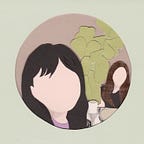Bird Matters
January 5th is the National Bird Day.
Birds have always held a place of fascination in our minds. That could be why someone initiated the National Bird Day to draw awareness of these creatures that play a sustainable role in our natural landscape.
Due to increasing globalization, we gradually live in an environment that gives insufficient exposure to nature. Studies have also found that natural elements have been linked with human well-being, such as decreasing depression, reducing anxiety, enhancing concentration, expanding pain tolerance, and increasing overall emotional satisfaction. The natural elements mentioned above include not only plants and animals but also lighting and aesthetic designs.
Moreover, when picking a place for bird watching, we inevitably think about an aviary. The aviary allows birds a larger living space to fly and rest on a higher ground. The size and scale of an aviary vary greatly. The larger ones are often located in a zoological setting. For example, the Edward Youde Aviary in Hong Kong and the Birds of Eden in the Western Cape belong to the large-scale category. The aviary in a more intimate setting is like the Hamilton Aviary in Ontario. The home aviary, also known as bird rooms, has recently become more popular. Some bird rooms are within a single-family house and share part of the homeowner’s living space.
The Dr. Bird room inside the Sandy Spring Museum, Maryland, reminded us of a French military birdhouse designed by Jean Desboure in 1889. Even this Dr. Bird room is named after the physician Jacob W Bird, who began his medical practice in 1909 in Sandy Springs. The octagonal-shaped room with Oak Trusses gives visitors the impression of being in a giant closed garden pavilion that could be an aviary. The space feels light and airy with the five large windows at the parameter and the cupola windows at the top. Its high ceiling and column-free area seem large enough for pet birds to fly around.
Historically, a famous Bird Room (fugleværelset) has also been inside the Royal Palace of Oslo. The Royal Palace was initially built for the King Carl Johan in 1825. Its bird room, completed in 1843, was designed by the artist Johannes Flintoe, who is known for his landscape scenes found in Romantic Nationalism. This picturesque room covers the rich variety of life in the garden- forty-three birds and six butterflies, plus a white-tailed eagle hovering on the ceiling.
While fascinating with the spacious Dr. Bird Room and Johannes Flintoe’s fresco panel from the bird room, a WELL feature came to mind.
“Incorporating natural elements into buildings can support occupant relief from stress and mental fatigue, as well as help establish a sense of place.” — WELL M02, Provide Connection to Nature
On this day, we dedicate this card to bird watchers and bird lovers. Whether it’s a symbolic landscape or a natural linkage, we hope they have found their favorite spot connecting to nearby nature and enjoy birdwatching.
